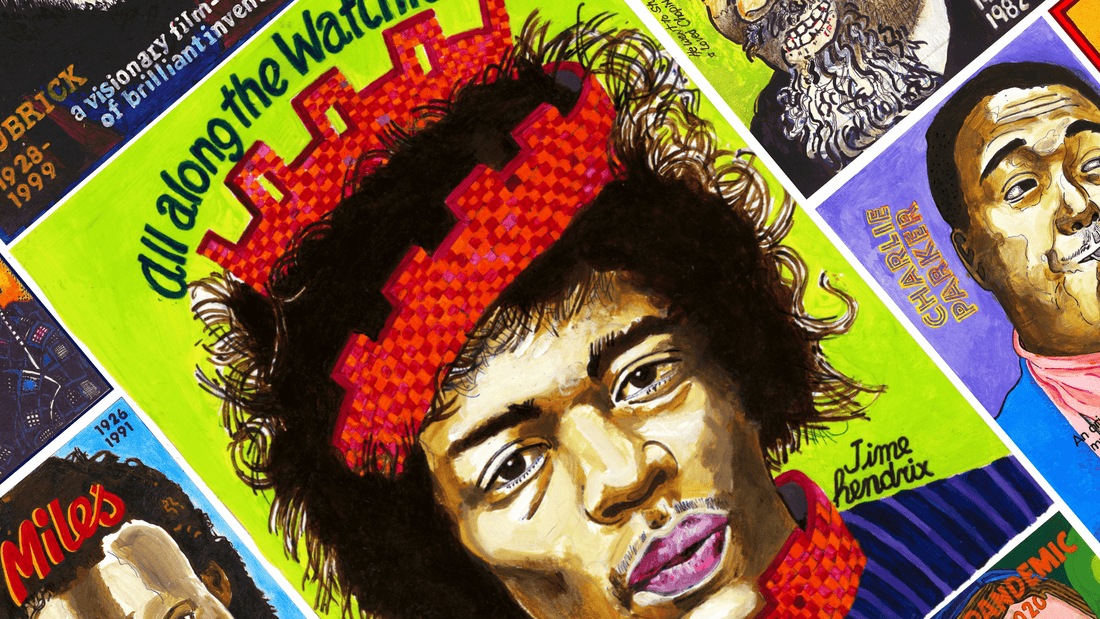
Jimi Hendrix: The Electric Life of a Guitar Legend
Share
Jimi Hendrix: The Electric Life of a Guitar Legend
Born on November 27, 1942, in Seattle, Washington, Johnny Allen Hendrix—later renamed James Marshall Hendrix—entered the world during a time of uncertainty. His father, Al Hendrix, was in the military and away for much of his early childhood. Life at home wasn’t easy. The Hendrix family faced poverty, instability, and frequent moves. Music, however, became young Jimi’s escape—a world where he could create, dream, and eventually transform.
As a boy, Jimi would strum a broomstick like it was a guitar, imagining himself on stage. When he finally got a real guitar at the age of 15, a secondhand acoustic with just one string, he was inseparable from it. Jimi taught himself to play by ear, mimicking the blues, soul, and rock records he adored. He was left-handed but couldn’t afford a left-handed guitar—so he flipped a right-handed one upside down and restrung it. This simple adaptation would become part of his signature sound.
After high school, Hendrix enlisted in the U.S. Army in 1961, but his rebellious spirit didn’t mesh with military life. He was honorably discharged after a year, freeing him to pursue music full-time. He began performing on the Chitlin’ Circuit with artists like Little Richard, the Isley Brothers, and Wilson Pickett, learning the ropes of showmanship and stage presence.
Everything changed in 1966 when Hendrix moved to London and formed the Jimi Hendrix Experience. With Noel Redding on bass and Mitch Mitchell on drums, the trio exploded onto the music scene. London had never seen—or heard—anything like Hendrix. His debut album, Are You Experienced, was a sonic revolution. Songs like “Purple Haze,” “Foxy Lady,” and “Hey Joe” introduced the world to his raw, mind-bending sound: distorted, psychedelic, soulful, and unlike anything before.
Hendrix didn’t just play the guitar—he made it sing, scream, and cry. On stage, he played with his teeth, behind his back, and even lit his instrument on fire, pushing the boundaries of performance art and musicianship. At the Monterey Pop Festival in 1967, he torched his guitar in one of the most iconic moments in rock history. A year later, he electrified the world again with his haunting, protest-laced version of “The Star-Spangled Banner” at Woodstock in 1969.
Despite his fame, Jimi struggled with the pressures of success. Constant touring, management conflicts, and substance use took a toll. He was intensely private, introspective, and often misunderstood. Though he reached incredible heights in just four years of stardom, he never got to fully realize the next phase of his musical vision, which included jazz, funk, and orchestral elements.
On September 18, 1970, at just 27 years old, Jimi Hendrix died in London. The official cause was asphyxiation due to sleeping pill intoxication. His death shocked the world and added him to the infamous “27 Club” of artists who passed away far too young.
But even in his short life, Hendrix changed music forever. He redefined what a guitar could do and inspired generations of musicians to push boundaries. His recordings, like Electric Ladyland and Axis: Bold As Love, remain timeless works of art.
Jimi Hendrix wasn’t just a guitarist—he was a force of nature, a revolutionary voice, and a reminder that sometimes, the brightest flames burn the fastest.
